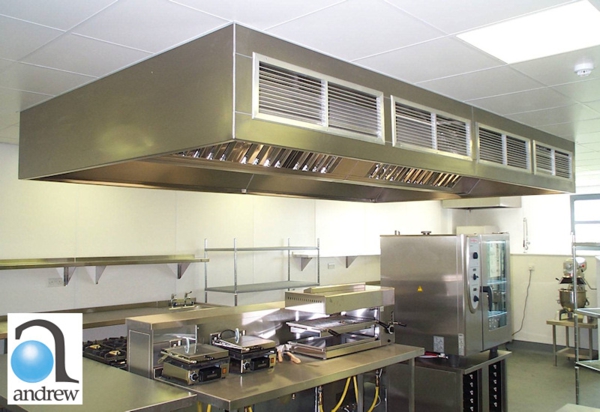In order to keep your home clean and safe, you need to have proper ventilation throughout your kitchen. This will help remove odors, eliminate build up on walls and cabinets and reduce the pollutants that form in the air. In order to properly ventilate your home, you need to ensure that you have the right type of ventilation system. The following are a few different types of ventilation options available.
Range hoods.
This is the most common type of ventilation system for the kitchen. Range Hoods sit directly above the stove, usually between 18 to 30 inches from the top of the stove. They also need to span the width of the cooktop.
Range hoods need to be hooked up so that they ventilate outside. This ensures that you are getting rid of the pollutants and that the ventilated air is not traveling back into your home.
Large capacity hoods.
These hoods are great for cooktops that may be found in a kitchen island. Since these cooktops are not blocked by cabinets or walls, air flows more freely throughout them, making it easier for pollutants and build up to spread throughout your home. Large capacity hoods minimize this airflow and helps push these pollutants through the vent and outside of the home.
Downdraft exhaust.
If you don’t have the option to put in a range or hood over your cooktop, you may need to enlist the help of a downdraft exhaust. These ventilation systems pull pollutants down into the cooktop and ventilates them outside of the home. Since these are a great option for cooktops that are located in islands or peninsulas, they are not as effective as those that sit above it.
The Viking Downdraft Exhaust is one of the most elite systems on the market. When not in use, the exhaust fan will retract back into your countertop so that you don’t see it. When your stovetop gets hot, the exhaust will automatically protrude to suck the hot air down and out of your home.
Check the CFMs.
When purchasing a ventilation system, you will need to make sure that it is the right size and power for your home. You can tell how well a ventilation system will perform by checking its CFMs (cubic feet per minute). This refers to the amount of air that a ventilation system can move per minute. Those systems that have a higher CFM will perform better than those with lower CFMs.
Additional considerations.
Along with size and power, there are other factors to consider when purchasing a ventilation system. Systems that have variable fan speeds are the best options because they allow you to pull various amounts of air depending on what you’re cooking.
Noise may also be an issue. If you kitchen is located right next to your living room or bedroom, you want to make sure that your ventilation system is not noisy. You don’t want to have to yell at the person sitting next to you just to have a conversation over the noise of your ventilation.
Style is another factor. You want to make sure that your ventilation system matches your kitchen’s decor. Ranges and hoods come in many different styles, so you can easily match the hardware or color of your kitchen, adding to the ambiance of your kitchen.
If your range or hood will be sitting over your stovetop, you will want to choose one that has a light. This way, you’ll be able to see what you’re cooking.
Ventilation systems are important. Make sure you decide which type of system you need for your home and make sure it is powerful enough for the size of your kitchen. Choosing the right system will ensure that your home is properly ventilating pollutants and buildup, making your home safer and cleaner.
Bailey is a home designer and remodeler. She enjoys giving tips on remodeling, home improvement, and kitchen design. Bailey also writes for the Drury cabinet company.

